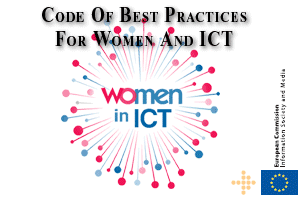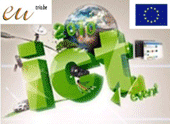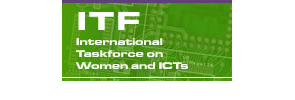
| Official news | | | | | Collected from GWTnet | Calendar | Mapping | Questionnaire | Questionnaire statistic | Registration | ECWT Newsletters |
 |
 |
|
Challenge While the EU is producing more Science and Engineering graduates than the US and Japan, the overall funding of tertiary education as a percentage of GDP is lower in the EU than in the US and women remain under-represented. According to the Relevance of Science Education (ROSE) survey (2007) carried out in EU Member states and 13 other countries around the world among 26.000 students:
At university level, the discrepancy between the number of men and the number of women opting for science and technology and ICT topics becomes more noticeable. In the majority of countries, women with a level of qualification corresponding to tertiary education outnumber male graduates with respect to the entire reference population. Participation rates in tertiary education are generally higher among women than men, except in Liechtenstein and Turkey, where men outnumber women irrespective of the age group. Numerical superiority of women is very conspicuous in Denmark, Estonia, Latvia, Lithuania, Malta, Slovenia and Iceland. In Bulgaria, the Czech Republic, Germany, Greece, Austria, Slovenia, Finland and Iceland there has been a decrease in the number of men who have studied at a level corresponding to tertiary education. Although the trend across tertiary education level shows a general increase in the number of highly educated females, in specific sectors, such as computing and engineering and engineering, female graduates are significantly outnumbered by male graduates. A UNESCO study shows that the percentage of female graduates in science and technology in Europe varies from 44% in Estonia to merely 20% in the Netherlands. In most of the Eastern European countries considered by the UNESCO study (Estonia, Bulgaria, Romania, Poland, Latvia) the percentage of women graduates in science and technology is situated above the EU average, while Austria (23%), Germany (24%) and France (28%) are situated below the EU average of 33%. At international level, the average percentage of female graduates in the science and technology field in Europe (33%) is third, behind South Africa (37%) and Brazil (37%). While women are the majority in advanced research degrees (PhD) in natural sciences they are outnumbered by men by more than 60% in engineering and engineering trades.The gap between male and female PhD researchers is 65.08% in engineering and 62.8% in computing, while female PhD researchers outnumber men by 8.8% in life sciences. The full report:
ECWT's response to the challenge The ECWT actionplan will be based on a Regional Mapping of stakeholders, resources, good examples that will be carried out through the European Directory for Women and ICT supported by the European Commission DG INFSO between October 2009 and October 2010.
The Code of Best Practices signed by Aclatel-Lucent, IMEC, Microsoft, Motorola and Orange FT was launched the 3rd of March 2009 presents a number of best practices.
|











